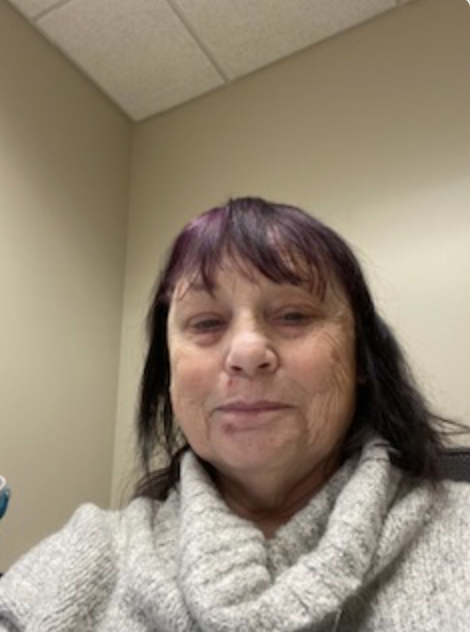
Sign up for a new account.
And get access to
The latest T1D content
Research that matters
Our daily questions
Sign up by entering your info below.
Reset Your Password
Don't worry.
We will email you instructions to reset your
password.
Living with type 1 diabetes (T1D) requires you to think ahead and be prepared for all types of situations, including hypoglycemia (low blood glucose). If you’re like most people with diabetes, you have a glucagon kit or two on hand just in case your blood glucose goes critically low.
If you haven’t used glucagon before, the thought of doing so might make you nervous or anxious. You might even feel proud that you’ve managed not to need it this far. While using emergency glucagon can be scary given the circumstances, it’s not something to be ashamed of.
What is glucagon?
Made by the alpha cells in the pancreas, glucagon is a hormone that tells the liver to release sugar into your blood to avoid hypoglycemia. However, this preventative function doesn’t work correctly when you have T1D.
There are several types of glucagon available, which include:
- Gvoke, which comes as a hypopen or pre-filled syringe (PFS)
- Baqsimi, which is a nasal spray
- Zegalogue, which is an auto-injection pen or PFS
It’s also important to know that you do not need to be unconscious to use glucagon. Other times when it might be appropriate include:
- If you can’t eat or drink due to a stomach virus, nausea, etc
- If you accidentally give too much insulin
- If your blood sugar continues to drop even though you ate a large amount of food
Throughout your life with diabetes, you might even need glucagon more than once. That’s been the case for Linda Reiter, who has had T1D for nearly 65 years.
Linda’s glucagon experience
 As a child, Linda often had overnight lows, which required glucagon to treat. With the help of her continuous glucose monitor (CGM), overnight lows have decreased, but she still occasionally needs glucagon.
As a child, Linda often had overnight lows, which required glucagon to treat. With the help of her continuous glucose monitor (CGM), overnight lows have decreased, but she still occasionally needs glucagon.
“There are times when either I’ve sunk too low and can’t do anything for myself, or I know it’s heading down real quickly, and I know I’ve gotta do that Gvoke pen. They have been lifesavers for me,” she said.
Reiter has tried a variety of glucagon products but prefers Gvoke as she tolerates it best. She says after taking glucagon, it typically takes about 30 minutes before she can get up and walk around and about an hour before she is able to go back to work, clean, or do other chores. She shared that after taking glucagon, she tends to feel sluggish and thirsty and develops a headache, though she doesn’t typically feel bad enough that it impacts her ability to get work done.
Elyse’s glucagon experience
 Elyse Vandersteen has needed glucagon two times since being diagnosed 18 years ago. She was conscious in both situations but was not able to get her blood glucose up. The first time, she ate for an hour before getting sick because of how much she had eaten. She then called the endocrinology helpline at her clinic, which told her to fill up a syringe with 50 units of glucagon. She didn’t need to take all of the glucose in the PFS because she was still conscious.
Elyse Vandersteen has needed glucagon two times since being diagnosed 18 years ago. She was conscious in both situations but was not able to get her blood glucose up. The first time, she ate for an hour before getting sick because of how much she had eaten. She then called the endocrinology helpline at her clinic, which told her to fill up a syringe with 50 units of glucagon. She didn’t need to take all of the glucose in the PFS because she was still conscious.
The other episode was caused by accidentally taking 20 units of insulin instead of entering 20 grams of carbohydrates into her pump.
Vandersteen said she experienced a range of emotions after taking glucagon, from shame to relief.
“The main thing was feeling really relieved,” Vandersteen said. But the other part was scared nervousness because of how expensive [glucagon is]. I was just irritated at myself for ‘letting it happen’ when obviously it’s out of our control. We can’t control how our body is going to react, if it was like the right amount [of insulin given],” she continued.
Vandersteen further explained that the second time she needed to take glucagon, she had just gotten her own insurance plan and wasn’t sure if she could afford the medication. She used the leftover glucagon from the first time she needed it to avoid paying for another prescription.
“It resulted in me having to make not as smart of a decision just because of finances,” she said.
Don’t feel ashamed for using glucagon
Using glucagon can bring on a variety of emotions. Unfortunately, a common one is shame, likely because you feel partly responsible for your blood glucose going low. But like Vandersteen said, you can’t control how our bodies respond to things like exercise, insulin or hormones. Glucagon is just another tool to add to your collection.
Ask your doctor for a prescription
If you don’t currently have glucagon or it’s expired, talk to your doctor about getting a prescription. Note that there are copay cards for people on insurance and patient assistant programs for those who do not have insurance in order to get emergency glucagon.
However, if you do have insurance, but your company denies coverage, here’s what to do:
- Understand your rights
- Check the formulary
- Request an exception if it’s not covered under your plan
- File an appeal
There’s no doubt that living with T1D is challenging. Think of glucagon as a life-saving tool to help you when you need it most. There is nothing wrong with using this medication if you need it; remember, it’s not your fault if your blood glucose goes extremely low. If you don’t have glucagon on hand, make sure to ask your doctor for a prescription and use the resources available if you need help getting it!
Kourtney Johnson
Related Stories
1 Comment
Patient Stories: I Used Emergency Glucagon When... Cancel reply
You must be logged in to post a comment.








One does not require $100 medical words like “hyperinsulinism” to describe the incomprehensible and profoundly enigmatic ways of T1D life. Much better quotes come from two of participants cited, to wit:
“. . . you can’t control how our bodies respond to things like exercise, insulin or hormones.”
And,
“There’s no doubt that living with T1D is challenging.”